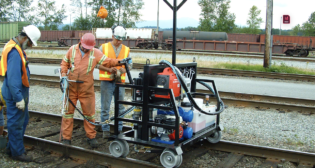
Operation Lifesaver: Distracted drivers a rail safety factor
Written by William C. Vantuono, Editor-in-ChiefOperation Lifesaver, Inc. Tuesday said federal statistics show that inattentive drivers contribute to approximately 3% of all vehicle-train crashes at highway-rail grade crossings. In addition, 20% of grade crossing collisions involve motor vehicles striking trains at a crossing. A total of 2,397 highway-rail grade crossing collisions occurred in 2008,resulting in 286 deaths and more than 900 injuries.
The national, nonprofit railroad safety education organization said it was making public the statistics prior to the two-day Distracted Driving Summit, beginning Wednesday in Washington, D.C.

“Distracted driving can lead to serious consequences at highway-rail grade crossings,” said OLI President Helen M.Sramek, who will attend the meeting. “In addition to the tragic deaths and injuries caused by car-train collisions, these events also are costly for communities. Emergency responders and roadways can be tied up for hours, keeping responders from other community emergencies and drivers from their jobs and homes.”
Federal Railroad Administration statistics show that in 78 of these vehicle-train collisions, the cause was listed as “highway user inattentiveness,”’ resulting in 14 deaths and 117 injuries. Through the first six months of 2009, there were 34 highway-rail grade crossing incidents caused by highway user inattentiveness, resulting in six deaths and 52 injuries.
Other FRA statistics show that in 488 of last year’s grade crossing collisions the vehicle ran into a train already present at the crossing. Of those crashes, more than 60% were at crossings equipped with either gates or flashing lights, while just more than 33% occurred at crossings with either stop signs or crossbuck warning signs.
“Although these collisions may have other causes, text-messaging or other distractions may be contributing factors,” said Sramek. “In one incident reported by a major railroad, the motorist stopped on the track to answer the phone; another railroad notes that in more than 41% the incidents where a vehicle hit a train, the vehicle did not stop.”



